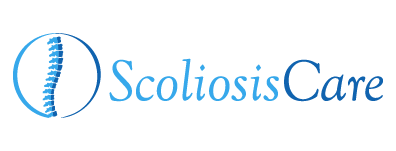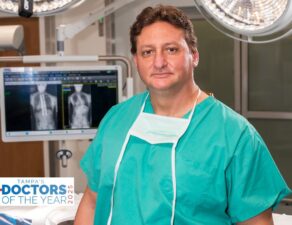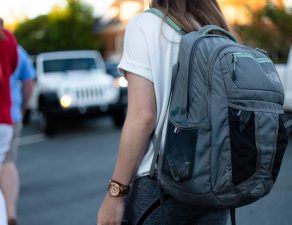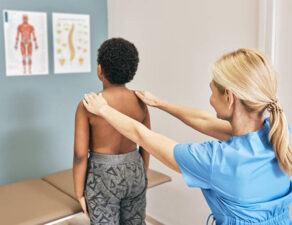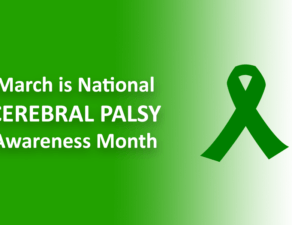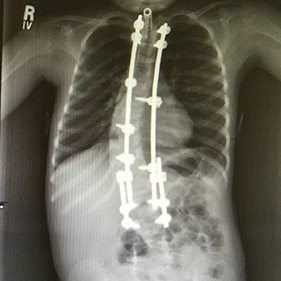
Click image for story
Jun 29, 2015 | BY Anu Varma Panchal
Like many other 7-year-old girls, Emalynn Roberts loves school, animals, the outdoors and swimming. However, until a recent surgery that eased her burden, little Emalynn had to deal with a condition that few of her peers had experienced—scoliosis that was so severe that she could not stand up straight, walk properly or breathe without mechanical assistance.But today, a year after a nearly 8-hour surgery performed by Dr. David Siambanes, pediatric orthopedic surgeon and Medical Director of St. Joseph’s Children’s Hospital’s Scoliosis Center, Emalynn’s head—which was six inches off position—is in line with her pelvis again. She is relearning how to walk, and the decreased pressure on her lungs means she only has to use her ventilator to help her breathe at night or when she is very tired.
“We’re tickled pink,” says Emalynn’s mother, Katie Roberts.
Emalynn’s scoliosis developed as a result of overall muscle weakness caused by a condition called Chronic Inflammatory Demyelinating Polyneuropathy. Although some children and infants develop scoliosis, the condition is most often detected later, according to Siambanes.
“Scoliosis can first appear in young children or even infants, but most often it shows up during middle to late childhood – a time when the spine and the rest of the body goes through a growth spurt,” says Siambanes.
According to the Scoliosis Research Society, scoliosis is a “musculoskeletal disorder in which there is an abnormal curvature of the spine.” It is the most common spine deformity, and affects about one out of every 40 people in the United States, or roughly 7 million people. Girls are eight times more likely than boys to have a curvature that progresses and requires treatment.
“Occasionally, scoliosis is the result of an illness, birth defect (such as cerebral palsy) or a malformation of part of the spine during pregnancy, known as congenital scoliosis,” explains Siambanes. (Emalynn’s scoliosis is a result of her illness.) “In most cases, scoliosis arises for no apparent reason, which is referred to as idiopathic scoliosis.”
About 85 percent of people diagnosed with scoliosis have idiopathic scoliosis.
According to Siambanes, some curves of the spine are mild and only need periodic monitoring by examination and X-rays to ensure the curve does not increase. If a curve is fairly large, between 20 and 40 degrees, and a child is still growing, a brace is often recommended to keep the curve from getting any worse.
If the curve progresses further, surgery may be recommended, and becomes a necessity in extreme cases of scoliosis when the rib cage puts pressure on the lungs, heart and other internal organs, making it more difficult to breathe and harder for the heart to pump.
“Scoliosis surgery is one of the most extensive and complex orthopedic surgical procedures performed on children,” Siambanes says. “However, recent advancements have improved the success and safety of these surgical procedures, and new surgical technology has eliminated the need for braces after surgery.”
Surgery entails attaching rods to the patient’s back, connected to the top and bottom of the spine. The rods are under the skin, of course, but do not lie directly on top of the spine. Teenagers who have finished almost all their growing can have their spines fused to the rods. However, that is not an option for smaller kids who still have to grow. Instead, those younger children have the rods attached to the top and bottom of the spine with a sort of rail system in between. Because some parts of the spine are fused on to the rods, the spine is able to continue growing by pulling on the rail, and because the rail is attached to the rods, the curvature is corrected with the guided growth. These children return to the doctor every six to nine months to have the rods adjusted.
Now, Siambanes is able to use a new type of pedicle screw to attach the rods, and he says these are more stable than previous screws and show a dramatically better correction, with patients able to walk two days after surgery. Technology also allows a technician in the Operating Room to closely monitor his patient’s spinal cord throughout the surgery.
“We stimulate the cerebral cortex on the brain and monitor the effects [of what I am doing] on the arms and legs,” Siambanes explains. “The safety has improved dramatically.”
Still, surgery on their child’s spine is never a proposition parents consider lightly.
“We had been putting off the surgery,” admits Katie Roberts, Emalynn’s mother. “But it was getting to a point where we knew we had to do it.”
Emalynn’s spine was curved in an S-shape, and she had a visible hump on her back. Her body was overcompensating for the shape, causing her to lose balance. Also, her family wanted to wean her off her ventilator, which wouldn’t be possible as long as the scoliosis caused her lungs to be squashed. So they started their research, looking for a surgeon with extensive experience, a comforting bedside manner and great references. Their search led them to St. Joseph’s Children’s Hospital and Siambanes, who says he often has to reassure parents.
“Two things scare them, the magnitude of the surgery; and everybody worries that their child is not going to get up and walk,” Siambanes explains. “We try to attack those fears.”
The Roberts family was reassured by his explanations and bedside manner and in went Emalynn for the more than seven-hour procedure. After it was over, Siambanes did what he always does: goes to the parents straight from the operating room with before and after X-rays.
“I always get a hug,” he says. “Sounds a little corny, but I like the hugs. Shows you we really helped someone with a life changing event.”
When her parents saw Emalynn afterwards, her mother says they could immediately tell the difference. Her daughter looked instantly straighter; inches taller already.
Her recovery was speedy. Within a week, Emalynn was off pain medications and in two weeks, back at school. She now is able to get through an entire day without her ventilator and is able to walk again. Her new straightness has boosted her self-esteem and enabled her to participate in more activities. Although she still deals with optic nerve damage, some hearing loss and daily intravenous therapy for her CIPD, Emalynn is thriving at school and home. She plays an active role in her own care, her mother says, comfortable with doctors, hospitals and advocating for herself. She loves playing with human anatomy apps on her iPad and performing surgeries on her dolls and animals.
“Her quality of life will be better,” says Roberts. “She has less aches and pains. [The surgery] has helped with her overall health. She’s made incredible strides. She’s a little peach.”
For more information on scoliosis treatment options or to schedule an appointment at St. Joseph’s Children’s Hospital’s Scoliosis Center, visit StJosephsChildrens.org.
Straight Talk on Scoliosis
When should children be screened?
Children can be screened at any age, although idiopathic scoliosis is more commonly discovered during a child’s growth spurt (10 to 15 years old). The Scoliosis Research Society recommends that girls be screened twice, at 10 and 12 years of age (grades 5 and 7), and boys once at 12 or 13 years of age (grades 8 or 9). Screening is quick and non-invasive.However, early detection is important. Look at your child’s back when she is wearing a bathing suit. If one shoulder appears higher than the other, or one side of the ribcage sticks out more than the other side, call your pediatrician.
Is scoliosis hereditary?
Partially. About 30 percent of adolescent idiopathic scoliosis (AIS) patients have a family history of scoliosis, and about one in three children whose parents have scoliosis will develop scoliosis. Siblings and children of adults with scoliosis should be checked at their yearly physical examinations, especially during their growth spurts (10 to 15 years old).
Why didn’t we notice it sooner?
Scoliosis curves can get worse very fast, especially during pre-adolescence, and small curves often go unnoticed until a child hits a growth spurt during puberty. Because scoliosis is rarely painful, children and their parents may not discover it until there are more obvious signs. Also, adolescents may not see their pediatricians on a regular basis.
Can scoliosis curves get better on their own?
No: Slight curves do not always require treatment, but even small curves will not go away. Larger curves untreated may not worsen, but that depends on the age and development of the child. Someone who is almost full grown may not see their curve worsen, but a child whose spine is still growing may see worsening curves. The only proven treatments are bracing and surgery. Some patients have turned to physical therapy, electrical stimulation and chiropractic care, but current medical literature has no proof that such procedures have an impact.
Can my child exercise and play sports?
Yes. Children with idiopathic scoliosis can participate in any sport as long as they have no backache associated with participation.
Does my child’s bad posture cause the scoliosis?
No. Bad posture does not cause scoliosis, BUT scoliosis may be the reason for your child’s bad posture, especially if he or she tends to lean to one side.
Do injuries, sports activities or heavy book bags cause scoliosis?
No. Injuries, sports activities or heavy backpacks do not cause scoliosis or make a curve worse. Heavy backpacks can be related to back pain, however. If back pain is present, lighten the load and make sure kids carry backpacks with the straps over both shoulders.
Could I have prevented it?
Because the causes of idiopathic scoliosis are not known exactly, it is hard to determine how to prevent it. If the causes are genetic, then there really is not much to do once a baby is conceived.
For more information visit Scoliosis Research Society. www.srs.org
Source: Scoliosis Research Society
